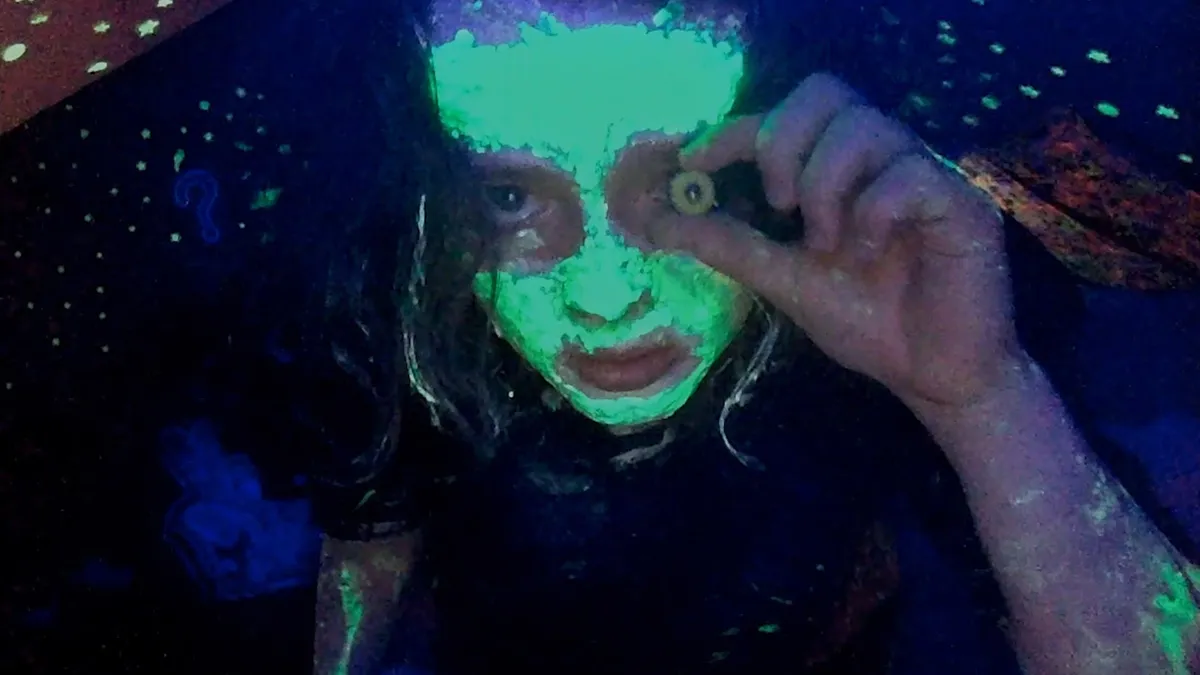'We're All Going to the World's Fair' Review: Dysphoria realised in Internet horror

Reality and fantasy begin to blur when a teenager, alone in her attic bedroom, immerses herself in a role-playing horror game online.
I was born in the year 2000 which makes me an elder member of ‘Gen Z’, or a ‘Zoomer’. We’re considered to be ‘digital natives’, meaning we’re “fluent” in the use of Internet-based technology.
I share many traits with my fellow Zoomers. I also share some with younger millennials, the previous generational cohort. I’ve experienced the “old Internet” and the Internet of today leading to a unique cultural position which at times alienates me from both generations.
Sometimes I feel alone. As if no one quite gets me. I’m grateful to have had family and friends who’ve helped me through life changes to become the person I am today. I’m happy and assured of who I am.
But what happens when someone doesn’t have that? When someone is alone and unable to understand themselves?
We’re All Going to the World’s Fair is the debut feature of Jane Schoenbrun. You may know them for 2024’s I Saw The TV Glow with Justice Smith. It’s the first of their ‘Screen Trilogy’, comprised of the two films and set to be completed by a series of epic novels. Both films explore themes related to the transgender experience.
It’s one of the only films I’ve seen that gets what it means to be young and online. There are moments that I recognised within my own life as a young child given access to the entire world through the lens of Internet culture.
Schoenbrun was born in 1987. You can sense the depth of understanding, the knowledge of grammar and aesthetic, that is essential to online culture. World’s Fair is the most accurate depiction of this world that I’ve seen on film. The sense of unknowing. The prospect of forbidden knowledge. The danger both immediate and removed. These feelings are left unexplored by directors of different generations.
What makes World’s Fair fascinating is Schoenbrun’s experience during production. A sthey wrote the script they began to understand their own gender identity, and came out after production wrapped. This makes their fluency in Internet culture all the more poignant. The disconnection from the real world, the uncertainty, the fear. It serves as metaphor for gender dysphoria in a unique and powerful way.
Actors sometimes rely on tropes when portraying someone slipping into potential insanity. Even seasoned actors can fall back on tired techniques. But Anna Cobb navigates a difficult role with ease all while avoiding cliche. This is commendable for any performer but it’s especially impressive on her debut.
There’s a temptation directors fall for when directing films related to the Internet. They overuse “on-screen shots”, direct recordings of digital environments like websites or videos, to immerse the audience in an online world.
Schoenbrun uses this technique sparingly in comparison. The opening scene where Casey performs the “World’s Fair Challenge” appears to be filmed through the lens of her laptop webcam but is filmed with a professional camera. This immediately establishes the dysphoric tone of the film. What is real and what is contained within a digital screen?
Worl’s Fair is structurally interesting if flawed. The introduction of JLB (Michael J. Rogers), an online stranger versed in World’s Fair Challenge lore, provides conflict throughout the story. Schoenbrun successfully balances feelings of distrust between the two with Casey’s need for information regarding her changing behaviours. The second act spins its wheels with scenes of Casey deteriorating mental state. But it finishes strong as Schoenbrun emphasises the uncertain and dejected tone.
How do we interpret the changes in our lives when we have no one to discuss them with? How do we navigate complex and alien feelings without support and without connection? The Internet is a powerful tool designed for connection. But as we see in We’re All Going to the World’s Fair this tool can just as easily cause us to break away. To isolate ourselves. To hurt alone.
Schoenbrun understands this better than I ever could and this film is testament to that. Transgender and queer people face many challenges, attacks on who they are and their existence. The Internet has been an essential tool in their fight for survival. But it cannot be the only one. They need allies in the real world. Especially in people who don’t share their experiences.
It’s when we come together and fight shoulder-to-shoulder will change begin.
Thank you for reading. It means a lot to me. Subscribe via email to receive my weekly newsletter. Follow me on Bluesky or Letterboxd to keep up to date. If you're feeling generous, you can donate to the upkeep of the site at Ko-fi. Once again, thank you.